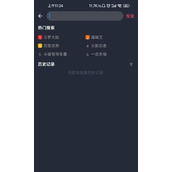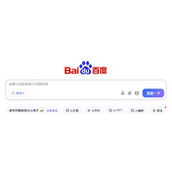Springboot在有锁的情况下正确使用事务实现代码
本篇文章小编给大家分享一下Springboot在有锁的情况下正确使用事务实现代码,文章代码介绍的很详细,小编觉得挺不错的,现在分享给大家供大家参考,有需要的小伙伴们可以来看看。
1. 概述
老话说的好:想要赚钱,就去看看有钱人有什么需求,因为有钱人钱多,所以赚的多。
言归正传,在Java项目的研发中,“锁”这个词并不陌生,最经典的使用场景是商品的超卖问题。
很多Java小白,通常会认为,给代码加上一把“锁”,就能解决多扣库存问题,却忽略了数据库事务的问题,今天我们就来做一个实验,分析一下商品超卖问题。
2. 场景介绍
有一款商品,库存只剩1件。
购买商品时,做三个动作,一是检查库存,二是扣库存,三是生成订单,三个动作在一个事务中执行。
模拟并发场景,使用10个线程同时执行用户购买商品的操作。
3. 代码实现
3.1 不加锁的代码实现
@Transactional(rollbackFor = Exception.class)
public void buy() {
// 查看是商品否有库存
Integer count = getProductCount();
if(count <= 0) {
throw new RuntimeException("库存为 0");
}
// 减库存
productRepository.reductCount();
// 生成订单
createOrder();
}
首先我们正常编写业务逻辑,用 @Transactional 注解控制事务。
经并发实验,产生了超卖的现象。
3.2 加锁的代码实现
@Transactional(rollbackFor = Exception.class)
public synchronized void buy() {
// 查看是商品否有库存
Integer count = getProductCount();
if(count <= 0) {
throw new RuntimeException("库存为 0");
}
// 减库存
productRepository.reductCount();
// 生成订单
createOrder();
}
这次我们使用 synchronized 关键字给方法加了把“锁”,理论上应该不会产生超卖现象了吧。
经实验,仍然产生了超卖现象。
因为虽然方法被锁住了,可是@Transactional 注解并没有及时的提交事务,导致库存没有及时扣减为0,因此还是超卖了。
3.3 正确使用事务的代码实现
@Autowired
private PlatformTransactionManager platformTransactionManager;
@Autowired
private TransactionDefinition transactionDefinition;
// @Transactional(rollbackFor = Exception.class)
public synchronized void buy() {
// 开启事务
TransactionStatus transactionStatus = platformTransactionManager.getTransaction(transactionDefinition);
try {
// 查看是商品否有库存
Integer count = getProductCount();
if(count <= 0) {
throw new RuntimeException("库存为 0");
}
// 减库存
productRepository.reductCount();
// 生成订单
createOrder();
// 事务提交
platformTransactionManager.commit(transactionStatus);
} catch (Exception ex) {
log.error(ex.getMessage(), ex);
// 事务回滚
platformTransactionManager.rollback(transactionStatus);
}
}
这次我们不使用@Transactional 注解管理事务了,改为手动管理事务。
经实验,解决了超卖现象。
相关文章
精彩推荐
-
 下载
下载猪笼城寨手游
模拟经营 猪笼城寨手游猪笼城寨游戏是非常好玩的一款模拟经营类型的手游,在这里玩家们
-
 下载
下载商道高手vivo版本
模拟经营 商道高手vivo版本商道高手vivo版是一款商战题材的模拟经营手游,游戏画面精美
-
 下载
下载我在大清当皇帝手游
模拟经营 我在大清当皇帝手游我在大清当皇帝手游是一款以清代为历史的模拟类手游,相信玩家们
-
 下载
下载解忧小村落最新版2024
模拟经营 解忧小村落最新版2024解忧小村落游戏是非常好玩的一款休闲放置经营类型的手游,在这里
-
 下载
下载洋果子店rose2中文版
模拟经营 洋果子店rose2中文版洋果子店rose2中文版是一款非常好玩的模拟经营手游,精美的















